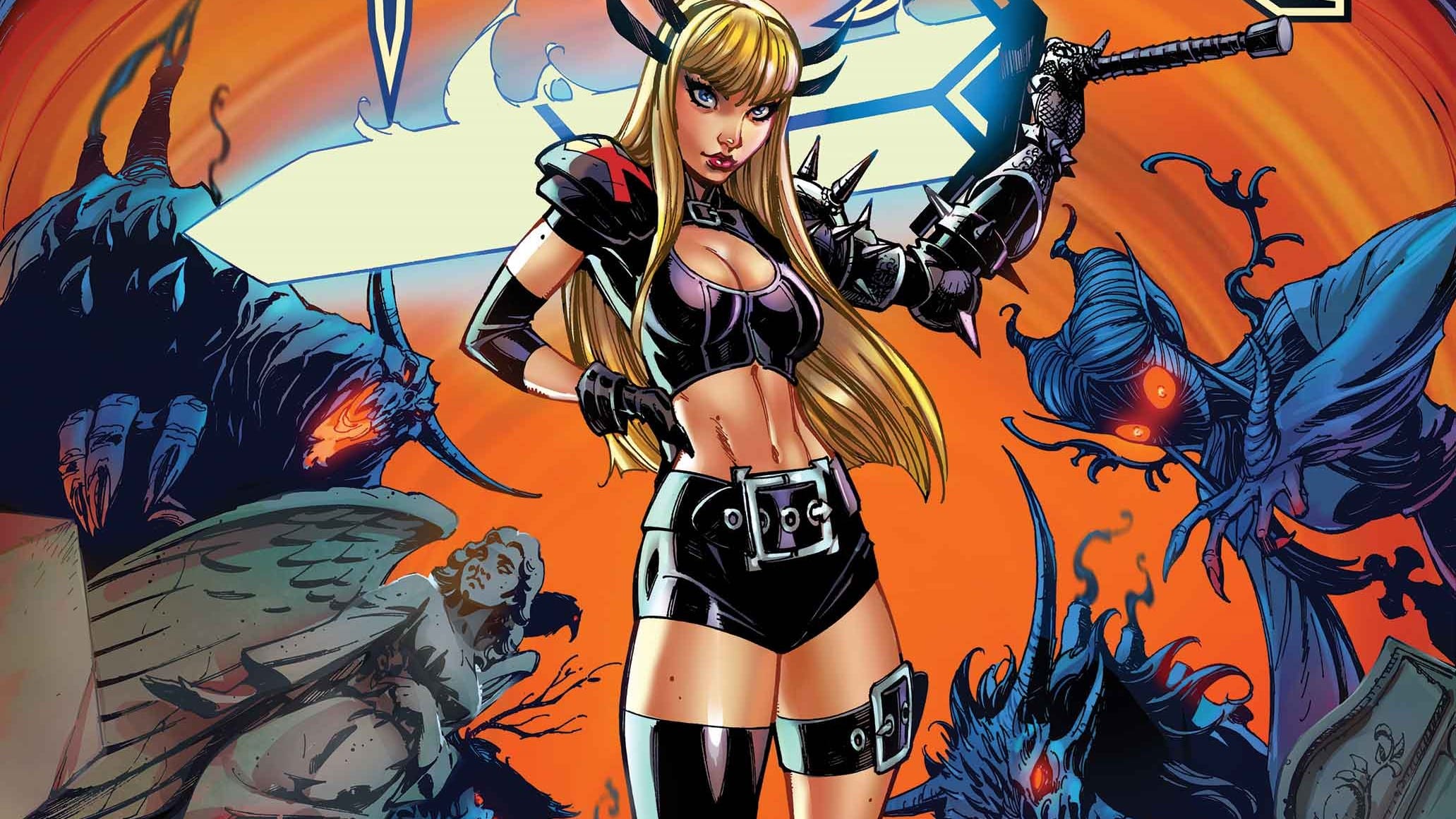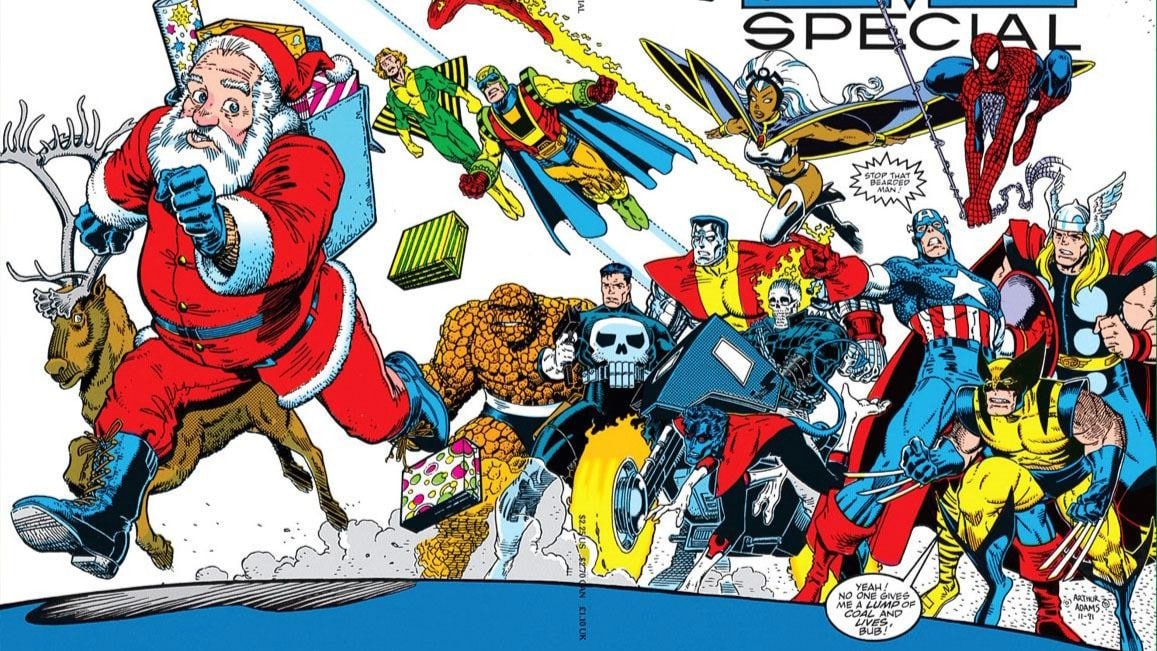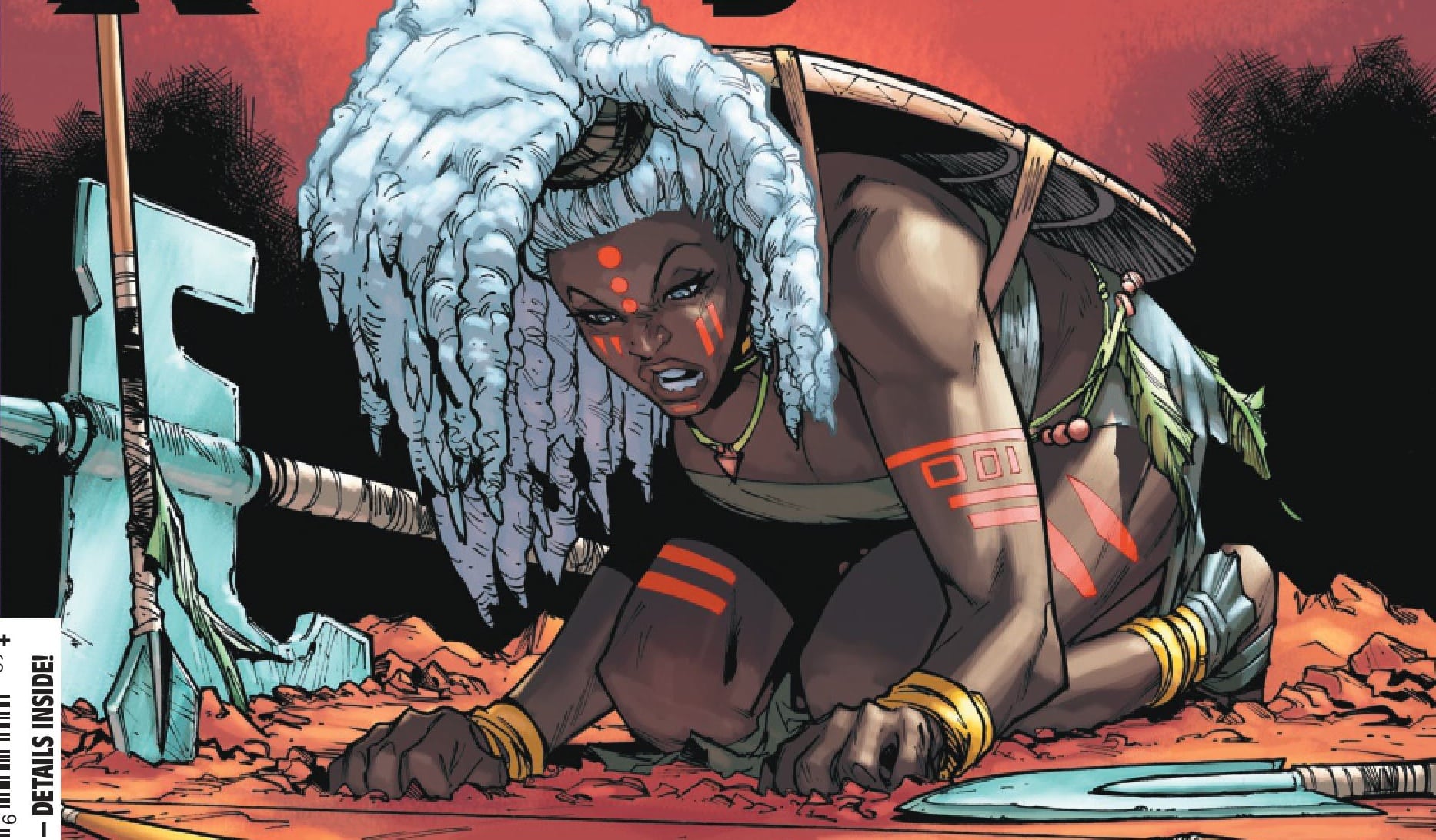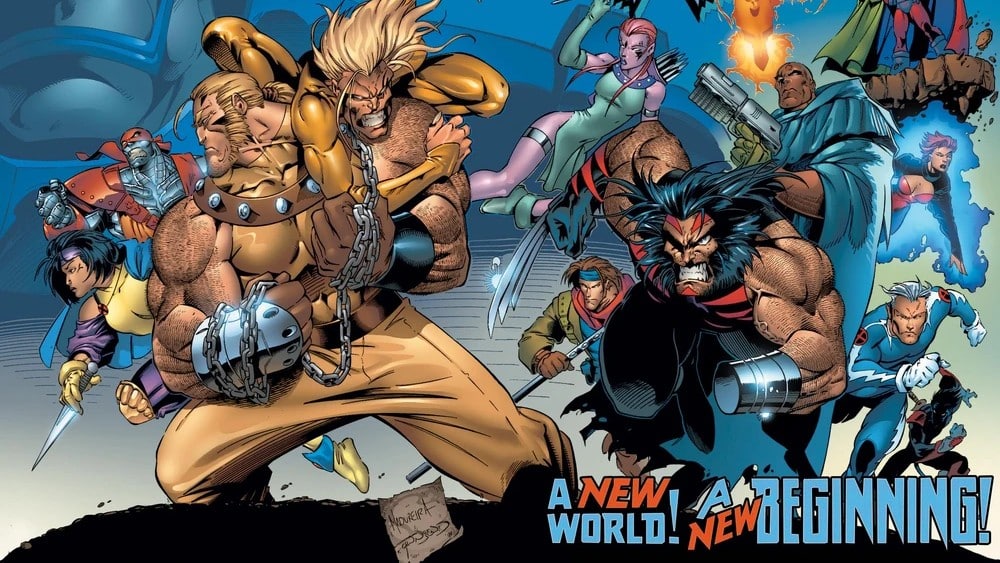Who’s that young adult with the giant broadsword, sorcerous powers, blond bangs, an unquenchable drive to save lost kids and enough long-term childhood trauma to fill an arena? It’s Illyana Rasputina, of course. Who’s that demonic gunfighter trying to conquer the world from his base in Juneau, Alaska? Can Illyana stop him? Find out in Magik #1, written by Ashley Allen, drawn by Germán Peralta, colored by Arthur Hesli and lettered by Ariana Maher.
Illyana Rasputin’s only previous more-or-less-solo outings stand among the best things that Marvel has ever done. If you want to show somebody who already, more or less, understands how Earth-616 works in the most powerful, psychologically insightful tales that cape comics can tell, you can’t do much better than Magik (1983) by Chris Claremont, some Buscemas and others, and its semi-sequel, What If Magik Became Sorcerer Supreme? by Leah Williams and Filipe Andrade. And if you want to show that same person visuals that do justice to Magik, and to the splendor and weirdness of Marvel sorcery, you can’t do much better than Brian Michael Bendis and Frazer Irving did when they wrote and drew — really, wrote and painted — Uncanny X-Men (2013) #6-7. If you’re an X-regular and you want great Illyana stories, don’t start here. Start there.
If you’re not an X-regular — or if you are, but your friends aren’t — this new title should hit the magical spot. Ashley Allen seems to have designed it as an intro to the character, and as such it works ultra-well.
We meet Illyana in Juneau, where her narrated flashbacks, alongside Peralta’s lovely soft pencils and inks, tell her backstory. Kidnapped from the X-mansion in childhood and held in Limbo by a demonic overlord, she escaped after years learning to master her powers, but at great cost: Within her lies an alternate self called the Darkchilde, a scary-looking violent master of violent energies, appropriate for the violent realm where she came of age, the realm she ruled (often in absentia) until, in the Krakoan era, she gave up its throne. She’s forever attached to her forever best friend and former (ahem) roommate, Kitty Pryde. She doesn’t seem to want to date or pursue romantic attachments (though see previous sentence). She has a lot of trouble with fun, birthdays and casual social interactions, even when the X-Men throw a birthday party for her.
I love these pages, whose Easter eggs hatch into callbacks to Illyana’s birthday party for Kitty. Scott intuits her motivations, Quentin is ridiculous, and Illyana can’t stop being rude to her friends: “You made pancakes. I deserve at least a cake.” She’s not one for parties.
What does Illyana prefer to do? Rescue children, especially when they’re endangered by their own mutant powers, or by scary demons, or by civilians’ incomprehension. The rest of this issue gives her a chance to do that. It’s a fun bag of tropes, some Illyana-specific and some taken from other stories about ancient menaces, especially Kieron Gillen and Dan Mora’s Once and Future. Attending a murdered mutant teenager’s funeral (Illyana sometimes looks like she belongs at funerals), our hero tries to save another mutant kid from yet another hateful mob. She finds herself fighting, instead, the menace from beyond this dimension who’s gonna be this run’s big bad. He’s called Liminal, he manifests as a gunfighter whose bullets have magical properties, and he wants (who doesn’t?) to take over this world. A series of (what else?) magical wards has held him back, but (of course) he wants to break through them. Illyana wants to stop him.
So does Juneau’s own Wise Spellcasting Grandma, whose family traditions include maintaining the wards that keep Liminal out of this world. She hasn’t trained her grandson Callen in those traditions yet, because he’s too young: “I thought I had more time to explain. To give you a childhood.” Yeah, nope. W.S.G. warns Callen not to trust Illyana. Not for anti-mutant prejudice reasons, this time, but fear of the dark magic and the will to manifest the Darkchilde. Who’s pretty scary. Who has to come out, and then collaborate with the “other” Illyana, to sorta kinda defeat this guy Liminal. Who does not really lose: After many panels of glowing lines and sorcery and swords and magic bullets, he’s loosed upon the world, and W.S.G. dies. Callen — whom Illyana has saved — insists he’s going with Illyana on her quest (starting with issue #2) to put Liminal back in the box.
Darkchilde appears, in Allen and Peralta’s telling, not just as someone Illyana can become but as another body who can appear to Illyana and speak to her and try to convince her to let her killer instincts rule. It’s a classic example of splitting, the trauma response where a child divides themself into Good Kid and Bad Kid. These alters can give each other advice. They can switch places, so that only one controls the body at one time. They can stick around until they become real-world diagnoses of dissociative identity disorder, also known as being a system. Good Illyana stories delve into such matters, without demanding diagnoses, and without making anyone look things up (other than maybe earlier X-comics).
This series, so far, looks like a good Illyana story. It also looks good. Peralta understands how to draw the cuteness of pre-kidnapping Illyana, how to draw kids who look like moody kids, how to draw Illyana in her Chris Bachalo outfit, and how to draw magical menaces, scary monsters and sorcerers’ duels. Hesli knows how to color them, too: bright magenta lines, floating and fluctuating runes, shadows over shadows to represent the scary Beyond. I do wish Peralta would take it easy on the inks. Some panels feel over-bold, over-inked, the outlines too strong for the figure drawing, as if a new pen, or new software, came with some dial turned up too high.
I also wish someone would keep cover artist J. Scott Campbell forever away from our girl. Illyana shows up on the cover (and on the previewed cover to the second issue) as horribly glossy softcore weeabo cheesecake, puckering heart-shaped lips to kiss the viewer. I wouldn’t go near a comic book with this cover if I knew nothing else about it, and I haven’t seen a Marvel cover that so badly fit good interiors since the infamous Emma Frost series. Fortunately, there are variants on the way.
X-traneous Thoughts
- As Russian speakers have known since her introduction, her name is properly Illyana Rasputina, since Russian last names take gendered endings (like Anna Karenina and Anna Akhmatova). Decades too late for that now. Also it’s almost always been Darkchilde, not Darkchild, but even a Rasputin or Rasputina must sometimes bend to the powers of spellcheck.
- How well does Ashley Allen know her Illyana? So well. “I know Kitty had something to do with this,” Illyana muses at her birthday party. Then there’s a cut to a mutant funeral where the picture of the dead girl looks like Kitty, which is also a callback to the death of Illyana in Uncanny X-Men #303, which is also a callback to the hallucinated funeral in New Mutants: Dead Souls.
- Adults chase teens down, shame them and encourage physical attacks on them because the teens have been hiding their true selves, but also chase teens down, shame them and encourage physical attacks on them if the teens reveal their true selves (which they might have to do to defend other teens). That’s what we see in the Juneau plot before the demonic gunfighter guy arrives, and it’s what we see in … uh, real-life Juneau. Fortunately real-life adults are fighting back.
- Mysterious sword-master versus cowboy hat guy with a gun? That’s a trope, too. I like how Allen’s reversed it.
Buy Magik #1 here. (Disclaimer: As an Amazon Associate, ComicsXF may earn from qualifying purchases.)
Stephanie Burt is Professor of English at Harvard. Her podcast about superhero role playing games is Team-Up Moves, with Fiona Hopkins; her latest book of poems is We Are Mermaids. Her nose still hurts from that thing with the gate.






